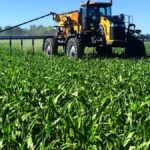
The export perspective on soybeans
The window is open for producers and the trade alike, but be forewarned. As our experts tell us, not all markets provide the same opportunities for IP growers

White mould in soybeans hits back
Vigilance is needed for a disease that’s still on the rise in many parts of Canada

Better herbicide tolerance
Better technologies are coming, but we’ll need patience and shrewd management until they arrive

The next corn battle
The boom in corn acres is great news for the West. But how much will it hurt growers in the East?

Sulphur gets hot
The nutrient’s use is definitely trending up, and there’s still more room for growth

Simplifying data management
Now into its second year, FieldView is helping users learn more, and do more for themselves

Farm the north country
Just ask Lee Laframboise. Ontario’s Near North can be a great place to farm

Higher corn yields on the way
Plant growth regulators are opening the door to unheard of yields

20 years of Bt corn hybrids
Growers are armed with more powerful, more precise tools than ever in history — but the war on corn pests is far from over

New from old
Adapting old machines to precision ag is possible after all


